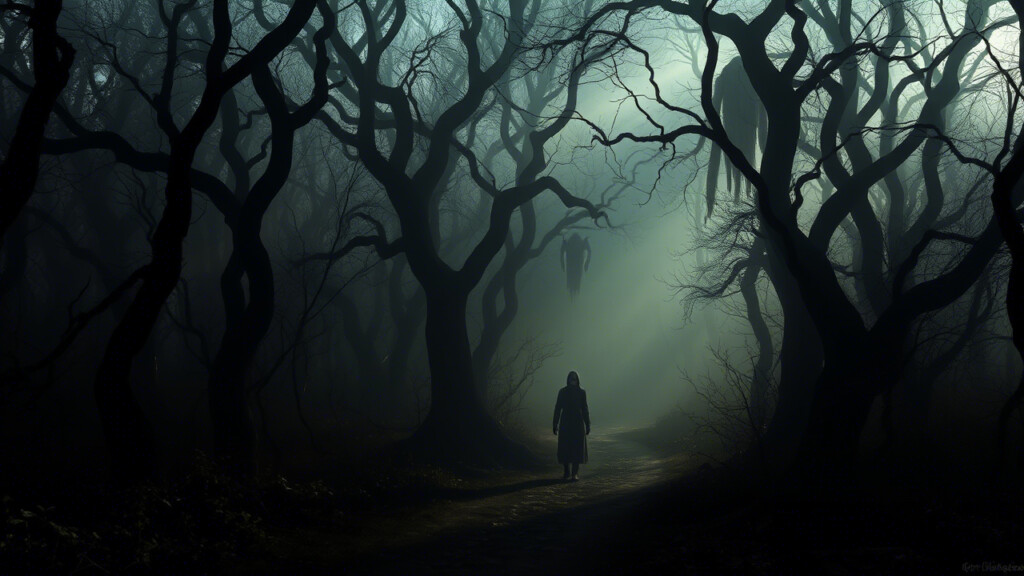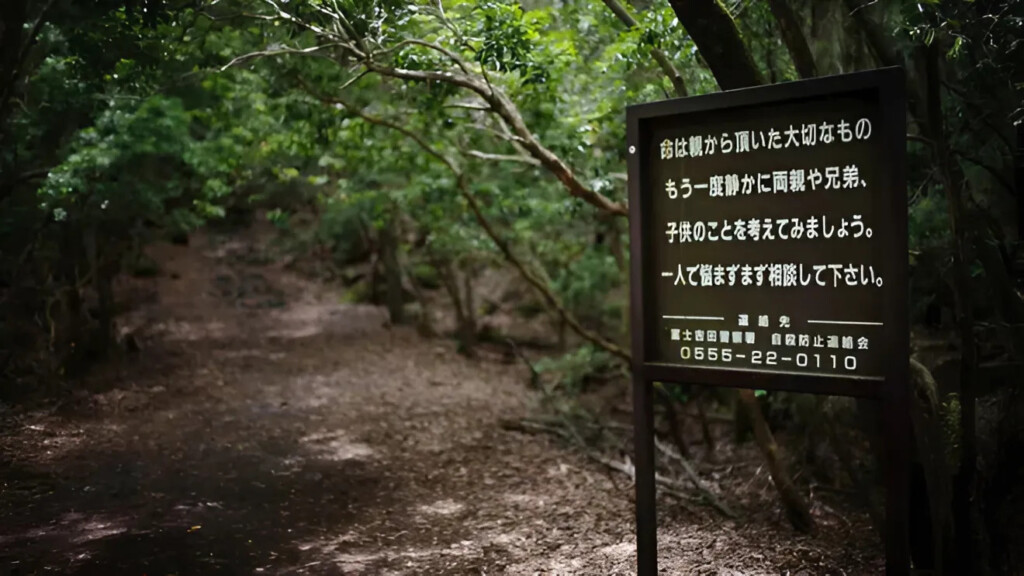At the foot of Mount Fuji, where one would expect only lush green forests and the tranquil embrace of nature, lies a place shrouded in darkness: Aokigahara. The Japanese call it Jukai (樹海) – “the Sea of Trees,” but the world knows it by a far more terrifying name: The Suicide Forest.

For centuries, this place has been entangled with eerie legends of wandering spirits, malevolent entities, and mysterious deaths. But is Aokigahara truly haunted by ghosts, or is it the darker corners of human psychology and Japanese society that have created such a chilling atmosphere?
Let’s step into this forest – where the line between reality and myth is terrifyingly thin.
1. The Ancient Curse – A Forest of Spirits
Since ancient times, Aokigahara has been woven into Japanese folklore with haunting tales. People believe that this forest is cursed, a dwelling place for yūrei (幽霊) – spirits of those who died unjustly, unable to find peace.
Legends tell of ubasute (姥捨て) – an old practice during times of famine when impoverished families abandoned their elderly or sick relatives in the forest to die. They did not pass away peacefully but screamed and wept in despair until their last breath. Their spirits, filled with resentment, are said to linger among the dense trees, calling out to the weak and luring them into eternal darkness.
Those who enter the forest have reported feeling an unseen presence trailing behind them, hearing sorrowful cries in the dead of night, or glimpsing pale figures slipping between the trees. Some believe these spirits whisper to the despairing, urging them toward death.
2. Aokigahara – The Silent Forest of Lost Souls
Aokigahara is unlike any other forest. Its ecosystem is strange – there are hardly any animals, and even the wind barely stirs. The volcanic soil disrupts magnetic fields, making compasses malfunction. Those who step into the forest easily lose their way, as if something unseen is guiding them deeper into the void.
Psychologists, such as Thomas Joiner, suggest that Aokigahara’s absolute silence induces sensory deprivation. When deprived of sound, the brain creates hallucinations – whispers, shadows, or figures lurking just out of sight. This effect can push those already struggling with mental distress into deeper paranoia and despair.
According to Edwin Shneidman (1993), an environment like Aokigahara amplifies suicidal ideation, especially when individuals feel cut off from the outside world. Alone with their thoughts, they can spiral into depression, seeing death as the only escape.
3. Why Do People Choose Aokigahara to End Their Lives?
According to WHO (2023), Japan has a suicide rate of 15.4 per 100,000 people – among the highest in the world. Aokigahara records around 70-100 suicides per year, according to Yamanashi authorities. But why has this forest become a destination for those seeking death?
Part of the reason lies in Japan’s culture of honor, where responsibility and dignity are paramount. Those who feel like a burden often choose death as a way to avoid inconveniencing their families. Dying silently in Aokigahara is seen by some as a “proper” departure.
Another factor is the way the forest has been popularized in modern media. The book The Complete Manual of Suicide (1993) by Wataru Tsurumi listed Aokigahara as an ideal place to die. In 2018, a controversial video by YouTuber Logan Paul further cemented the forest’s grim reputation, making it even more alluring to those in despair.
At the forest’s entrance, authorities have placed signs with messages like:
“Think of your family. Talk to someone. Your life is precious.”

But do those who walk in with no intention of returning ever truly read those words?
4. Aokigahara – A Haunting Mystery or a Warning Sign?
So, is Aokigahara truly haunted? Maybe, if one believes in the ancient legends of vengeful spirits. But perhaps the greater terror is not ghosts, but the shadows lurking in human minds and Japanese society.
Japan’s lost souls do not only wander the forest – they exist within everyday life. They are the young who feel abandoned, the workers crushed under corporate pressure, the individuals with no one left to turn to. A 2022 survey by the Ministry of Health revealed that over 30% of Japanese youth feel isolated, and society often neglects these people long before they are gone.
Not everyone who enters Aokigahara intends to die. Some are lost but still wish for someone to bring them back. Some write farewell letters, yet secretly hope someone will read them and understand their pain.
Perhaps the most haunting thing about Aokigahara is not its supernatural legends, but the stories of sorrow that no one has ever stopped to listen to.
